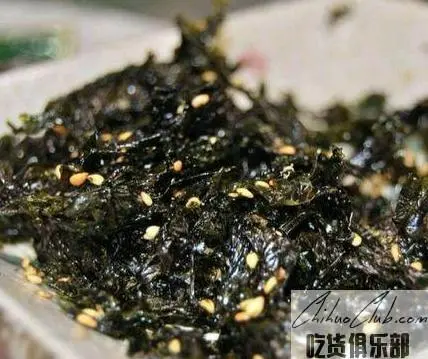
Rudong Porphyra yezoensis
-
Update date::
-
Date of protection::
-
Protected range:For example, the production area of Dongzao Porphyra is the administrative area of Rudong County, Jiangsu Province.
-
Related origin:jiangsu nantongshi rudongxian rudongxian-benchazhen rudongxian-caobuzhen rudongxian-chahezhen rudongxian-changshazhen rudongxian-chengzhongjiedao rudongxian-dayuzhen rudongxian-fenglizhen rudongxian-hekouzhen rudongxian-juegangjiedao rudongxian-juzhenjiedao rudongxian-matangzhen rudongxian-nantongwaixiangxingnongyekaifaqu rudongxian-rudongdongankejiyuanqu rudongxian-rudongxianjingjikaifaqu rudongxian-rudongyangkougangjingjikaifaqu rudongxian-rudongyanhaijingjikaifaqu rudongxian-rudongyanhailvyoujingjikaifaqu rudongxian-shuangdianzhen rudongxian-xindianzhen rudongxian-yangkouzhen rudongxian-yuanzhuangzhen
-
Category:
Such as the East Striped Seaweed, and the "the world's first fresh" Wenshu. Porphyra yezoensis is produced in temperate zone and has a limited amount of natural growth. The main producing area is Rudong. Because Rudong has the growth conditions of Porphyra yezoensis, it is suitable for climate, suitable water temperature and suitable salinity. Such as the oriental zebra porphyra is thin and tender, it is an ecological marine food with health benefits.
The breeding area of “Rudong Zezipon” is 120,000 mu. In the past three years, the county has processed 330 million yuan in one transaction and 672 million yuan in secondary processing. There are 79 processing enterprises and 9 secondary processing enterprises in the county, which promotes the employment of 3,500 farmers in the county. The products are sold to more than 40 countries and regions such as Japan, Southeast Asia and the European Union. The annual foreign trade sales are 520 million yuan.
Such as the quality technical requirements of Dongzao zephyr I. Variety Porphyra yezoensis (Poprphyra yezoensis). Second, the breeding environment The water quality of the cultured sea area is fresh, non-polluting, the water flow is smooth, the salinity is stable at 25-30, the pH value is 7.4-7.8, the seawater flow rate is 20cm/s, and the total nitrogen content of seawater is ≥200mg/m3. Third, aquaculture technology (a) cultivation methods Semi-floating squat cultivation and full floating squat cultivation. (2) Seedlings From late April to mid-September, the matured vegetables of the laver leaves are placed in a container containing dark sedimentation seawater, and the spores are released and attached to the clam shells to enter the indoor seedlings. (3) Breeding of seedling nets From mid-late September to early November, mature silky bodies and shell spores were collected into pre-prepared laver nets and hanged on trusses on the sea. In order to avoid the high water temperature from mid-October to mid-November, it is necessary to send the seedling net into the refrigerator for freezing. 4. Harvesting (1) The harvest period is from early December to mid-April. (2) When the algae body grows to 15cm to 20cm, it can be harvested. V. Processing (1) Dry seaweed 1. Processing process washing → chopping → pouring cake → dehydration → drying → classification → re-drying → packaging 2. Main processing points 1 Washing fresh seaweed with sea water (low water temperature) At 12 ° C, the salinity is 15 ~ 25) for more than 24h precipitation washing until the drain is discharged without sediment. 2 chopped water with water temperature less than 12 ° C, salt less than 1 进行 water for washing, the first dish washing time is 5min ~ 8min, water consumption is 40L / min ~ 80L / min; middle and late dish washing time is 8min ~ 15min, washing The water consumption is greater than 100L/min. 3 pouring cake, dehydration and dehydration until the free water is completely depleted. 4 The absolute humidity of the drying and drying room should be kept at 15g/m3~19 g/m3, the drying temperature should be set at 34°C~55°C, and the water content of seaweed should be 8%~11% when peeling vegetables. The sheet should be dried to water. The rate does not exceed 2%. 5 dry again and then dry the temperature and time. The first section is 40 °C ~ 45 °C, the time is 20min ~ 30min; the second section is 50 °C ~ 65 °C, the time is 30min ~ 40min; the third section is 65 °C ~ 75 °C, the time is about 50min ~ 70min; the last stage is 80 °C ~90 ° C, time is 120min ~ 180min. (2) Roasted seaweed 1. Processing process Raw material classification → For the supply of vegetables → Temperature control baking → Manual selection → Packaging and sealing → Metal detection → Packaging. 2. Main processing points The temperature is controlled and the temperature is 150 °C. Sixth, such as Dongzao zephyr quality characteristics (a) sensory characteristics such as Dongzao zephyr look dark brown, bright, with a strong natural flavor and aroma, seaweed slices are smooth and flexible. (B) physical and chemical indicators Moisture: dried porphyra ≤ 7.0g / 100g, roasted stripe laver ≤ 5.0g / 100g. Protein ≥ 36.0g / 100g, calcium ≥ 400.0 g / 100g, zinc ≥ 30.0g / 100g. (III) Safety and other quality technical requirements Product safety and other quality technical requirements must comply with relevant national regulations.
Apply to:
For example, the producers in the production area of Dongzao Porphyra can submit an application to the Rudong County Market Supervision Administration for the use of the “Special Mark for Geographical Indication Products”, which will be reviewed by the Jiangsu Provincial Bureau of Quality and Technical Supervision and announced to the General Administration of Quality Supervision, Inspection and Quarantine for approval. . For example, the testing organization of Dongzao Porphyra is selected by the Jiangsu Provincial Bureau of Quality and Technical Supervision in the testing institutions that meet the qualification requirements.